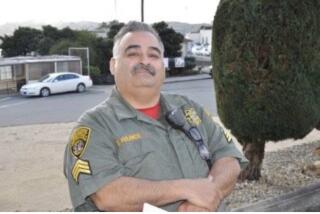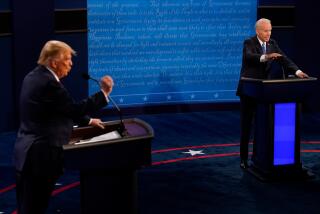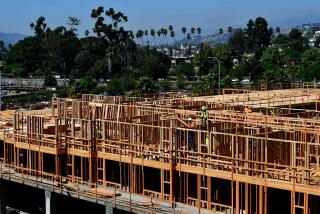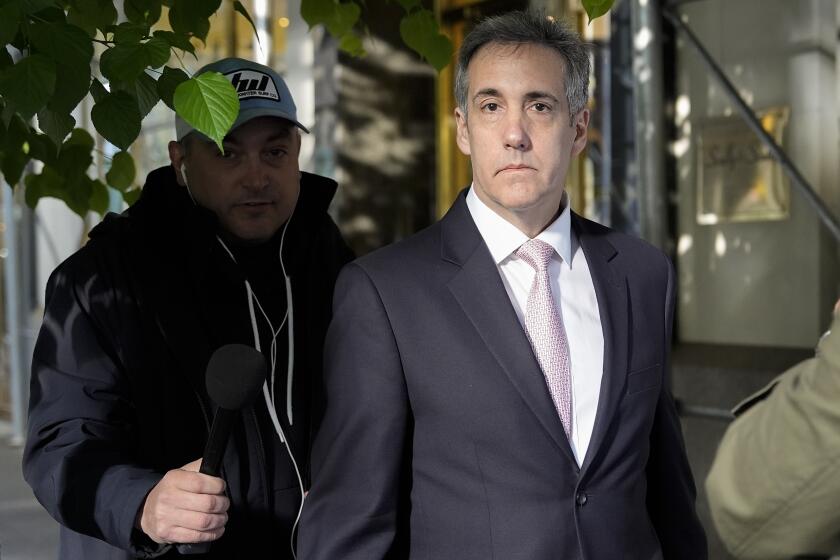All’s Quiet in Najaf, but Not in the Sunni Triangle
In the aftermath of the three-week battle for Najaf, interim Iraqi government officials Saturday inspected the extensive damage and pledged to undertake major reconstruction efforts. But though the holy city was quiet, violence flared elsewhere in Iraq.
Much of the deadly activity was in the so-called Sunni Triangle region, which had been relatively calm during the conflict in Najaf. There also was violence in anti-U.S. cleric Muqtada Sadr’s stronghold in Baghdad’s Sadr City slum.
In Baqubah, a city northeast of Baghdad, militants in two minibuses ambushed a convoy of three police vehicles on patrol, killing five policemen and injuring five other officers and two civilians.
There was continued U.S. bombing in Fallouja, where Marines -- required to stay outside city limits as part of an agreement in April -- frequently engaged in long-distance exchanges of gunfire with insurgents. American fighter planes bombed targets in the city Saturday night, the second time in 24 hours.
U.S. military sources said their goal was to destroy houses used by anti-American insurgents. In several previous air attacks, Fallouja hospital officials reported that women and children had been injured.
Fallouja officials announced Saturday that they had met with interim Prime Minister Iyad Allawi to discuss the continuing bombing runs. Khalid Jumailly, a prominent Sunni Muslim sheik who led the delegation, said Fallouja officials would try to ensure that insurgents did not attack U.S. military convoys on the highway east of the city.
In exchange, Allawi said he would ask the U.S. forces to stop the almost daily air attacks on Fallouja and the Marines to move their checkpoint from the eastern side of the city, which many residents view as too close to the downtown area.
In Baghdad, there was fighting in the sprawling Sadr City slum and a mortar round exploded in a crowded neighborhood on the east side of the city. Five people were killed and several wounded in the incidents.
Meanwhile, an Iraqi militant group said it had kidnapped two French journalists, Al Jazeera satellite television reported. The group demanded that the French government lift a ban on Islamic head scarves in schools to secure the captives’ release.
Al Jazeera, quoting unidentified sources, said the group, the Islamic Army of Iraq, had claimed responsibility for the execution Thursday of Italian journalist Enzo Baldoni.
A brief video of the French journalists, identified as George Malbrunot of Le Figaro and Christian Chesnot of Radio France International, was broadcast Saturday. The French Foreign Ministry had reported the journalists missing the same day Baldoni disappeared.
A Turkish diplomat Saturday said that police had found the bodies of a slain Turkish truck driver and an Iraqi man on a highway in northern Iraq. The corpses were discovered late Friday near Baiji, about 155 miles north of Baghdad, a diplomat at the Turkish Embassy in Baghdad said, speaking on condition of anonymity.
In Najaf, the Iraqi ministers of public works, health and state said at a news conference that they would soon make a formal assessment of the damage to the city and begin rebuilding. They said the government had won its confrontation with Sadr, who agreed in a deal brokered by Grand Ayatollah Ali Sistani to pull his forces out of the Imam Ali Mosque compound in exchange for amnesty and a pullback of U.S.-led troops.
“We believe that what happened was a victory for the Iraqis and for the sovereign government authorities,” Minister of State Kasim Daoud said. “We hope after this success that peace will take over and there will be stability in the country.”
However, government officials acknowledged that Sadr had survived to fight another day. They said he would continue to have the right to preach in the nearby Kufa Mosque, although it seemed that he would be barred from occupying the shrine as he has done in the past. With Kufa and Najaf declared weapons-free zones, presumably it would be difficult for Sadr to reoccupy them, unless he rearmed and broke his agreement with Sistani, which required him and his followers to leave both mosques.
U.S. diplomats, speaking on condition of anonymity at a briefing Saturday, said they viewed the resolution of the Najaf standoff as largely positive for the Iraqi government in comparison with discussions with Sadr in the spring when his militia first occupied the shrine. However, they also said that Sadr had not been vanquished and that unless there was rapid rebuilding of Najaf, and Sistani took a strong stand to keep Sadr’s Al Mahdi militia at bay in other cities, there could be further trouble.
In the spring, Sadr’s forces never fully evacuated the Imam Ali shrine, despite weeks of negotiations. “We think this was a tactical victory for the Allawi government.... When we went through the confrontation last spring, we ended up with Muqtada Sadr still in control of the mosques in Kufa and Najaf,” a senior U.S. diplomat said.
“He’s out of the mosque; his men are out; government authority is reestablished in both cities, and we think this came about not only because of the mediating of Ayatollah Ali Sistani, but because of the success of the coalition and Iraqi military,” the diplomat said. “I’m not trying to tell you this is over. It’s clearly not over. There’s no nationwide agreement with Muqtada Sadr and the Jaish al Mahdi.”
*
Times special correspondents Saad Sadiq in Najaf and Hamid Sulaibi in Fallouja contributed to this report.
More to Read
Start your day right
Sign up for Essential California for news, features and recommendations from the L.A. Times and beyond in your inbox six days a week.
You may occasionally receive promotional content from the Los Angeles Times.






